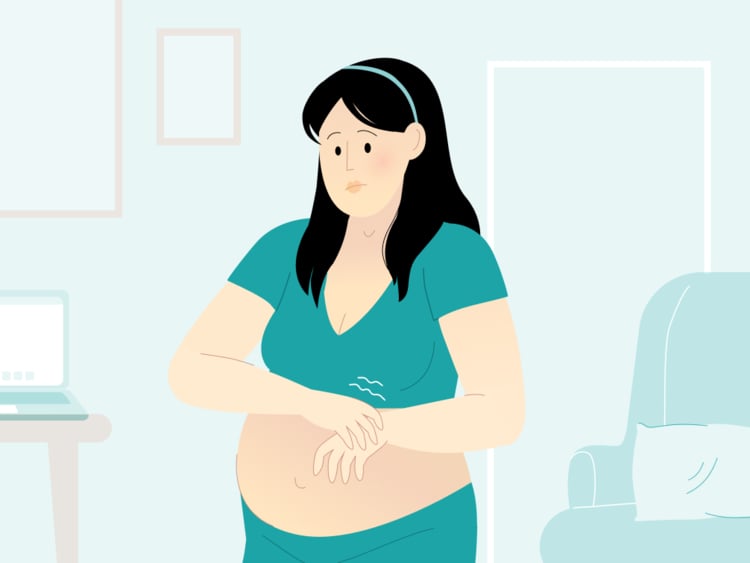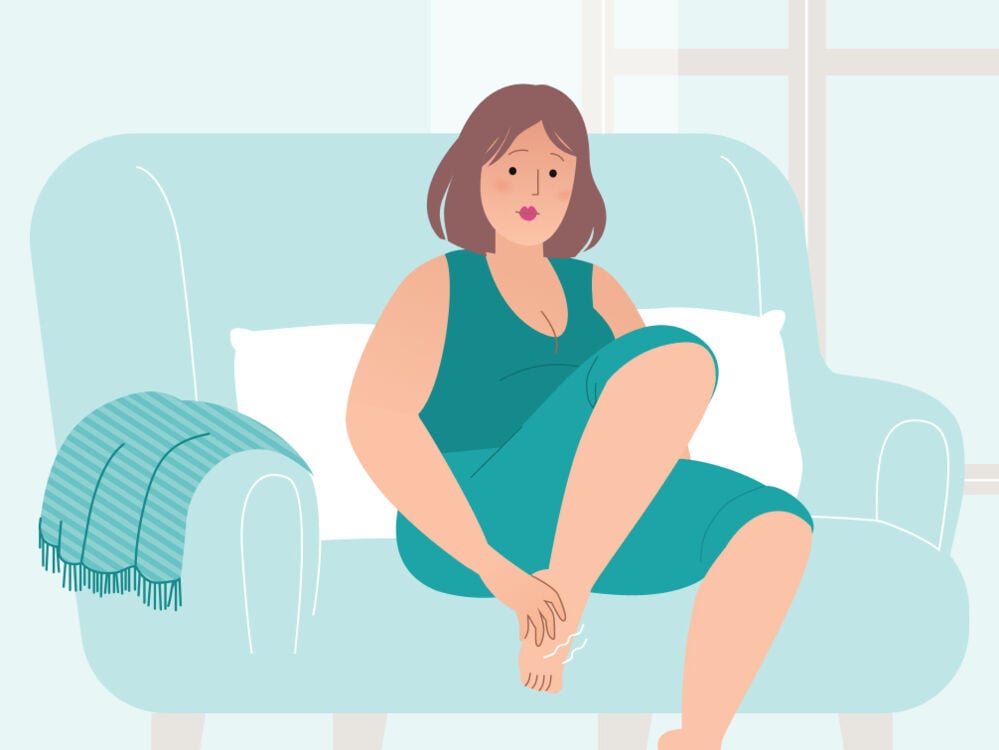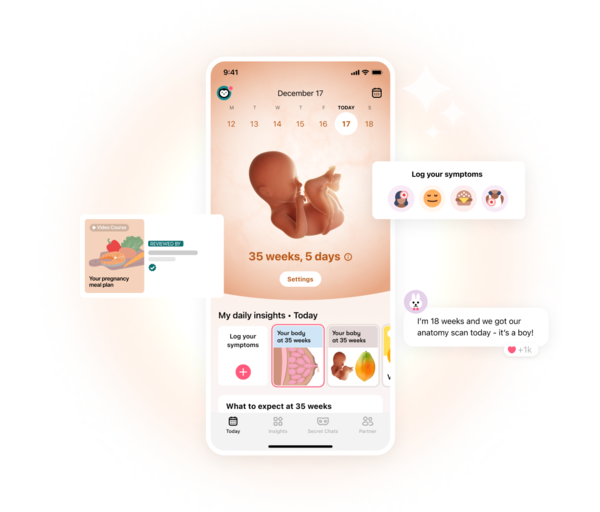What is cholestasis of pregnancy, also known as ICP? We take a closer look at what causes it, as well as the symptoms and how it’s treated.
-
Tracking cycle
-
Getting pregnant
-
Pregnancy
-
Help Center
-
Flo for Partners
-
Anonymous Mode
-
Flo app reviews
-
Flo Premium New
-
Secret Chats New
-
Symptom Checker New
-
Your cycle
-
Health 360°
-
Getting pregnant
-
Pregnancy
-
Being a mom
-
LGBTQ+
-
Quizzes
-
Ovulation calculator
-
hCG calculator
-
Pregnancy test calculator
-
Menstrual cycle calculator
-
Period calculator
-
Implantation calculator
-
Pregnancy weeks to months calculator
-
Pregnancy due date calculator
-
IVF and FET due date calculator
-
Due date calculator by ultrasound
-
Medical Affairs
-
Science & Research
-
Pass It On Project New
-
Privacy Portal
-
Press Center
-
Flo Accuracy
-
Careers
-
Contact Us
Cholestasis of pregnancy: Causes, symptoms, and treatment


Every piece of content at Flo Health adheres to the highest editorial standards for language, style, and medical accuracy. To learn what we do to deliver the best health and lifestyle insights to you, check out our content review principles.
Pregnancy can be an exciting time, but it’s also completely understandable to be daunted by all the changes happening inside your body. These changes can sometimes be linked to a number of pregnancy-specific conditions, such as cholestasis of pregnancy. You might already have heard of this condition, which is also sometimes also called intrahepatic cholestasis of pregnancy (or ICP for short).
ICP is the most common liver disease in pregnancy, but the condition itself is pretty rare. It only affects around 0.2% to 2% of pregnancies. If you have ICP, you’re likely to know about it, as it can cause intensely itchy skin without a rash, usually on the palms of your hands and the soles of your feet. That isn’t fun for anyone, although thankfully, the treatment for this itching is usually relatively straightforward, so you should be able to get some much-needed relief.
The condition can also potentially cause some complications for both you and your baby. While this sounds scary, remember that the condition is uncommon, and there are treatment options available. Keep reading to learn how to spot cholestasis of pregnancy symptoms, as well as its causes and treatment.
What causes cholestasis of pregnancy?
Before we dive into the causes of cholestasis of pregnancy, let’s first take a look at what it does to your body. Prepare for a mini science lesson. The condition begins when the flow of bile — a digestive fluid that carries away waste and breaks down fats during digestion — slows down. Bile is produced in the liver and flows into the gallbladder, but cholestasis causes a buildup of bile acids in the liver, which then enter the bloodstream. While this can be worrying to think about, keep in mind that cholestasis of pregnancy is rare and can often be treated with medication — without causing problems for your baby.
So what causes it? While scientists haven’t quite pinned down the answer to that just yet, it’s likely to “involve a combination of genetic susceptibility, hormonal factors, and environmental factors,” explains Dr. Nazaneen Homaifar, an obstetrician and gynecologist, Washington, DC, US.
While it’s possible that pregnancy hormones could play a role in its development, the exact reason why cholestasis can happen in pregnancy is still a bit of a mystery. It’s thought that the high levels of estrogen during pregnancy might affect the way the liver processes bile acids, which could lead people with certain combinations of genes to develop ICP.
You also have a greater risk of cholestasis of pregnancy if you have a history of liver damage or gallstones, or have had cholestasis in a previous pregnancy. If this is the case, it’s a good idea to speak to your doctor, but try not to worry too much about this. They will investigate and be able to give you further advice.
Take a quiz
Find out what you can do with our Health Assistant
Symptoms and complications of cholestasis of pregnancy
The main cholestasis of pregnancy symptom is having intensely itchy skin without a visible rash. “This can be generalized but is worse on the palms and soles of the feet,” says Dr. Homaifar. The itching is usually worse at nighttime, which can be frustrating when you’re trying to sleep. Understandably, the itching can also make you feel incredibly uncomfortable, but there are treatment options available. We’ll come to those in a bit.
As well as the itchiness, other less common symptoms of the condition can include:
- Jaundice (yellowing of the skin and eyes)
- Nausea
- Loss of appetite
Cholestasis of pregnancy can increase the risk of complications in your pregnancy, such as gestational diabetes (high blood sugar) and preeclampsia (high blood pressure).
How is cholestasis of pregnancy diagnosed?
So how would you go about getting a diagnosis of ICP? After going through your medical history with you, your doctor will check whether you’re experiencing any of the symptoms of ICP, such as intense itchiness, yellowish skin, or any change in your appetite. That might involve a physical examination.
Additionally, they’ll do a blood test to check for the levels of bile acids in your system, which will help them see how well your liver is functioning. They may also run a liver function test as part of the blood test. If the levels are significantly high, it’s likely you’ll be diagnosed with cholestasis of pregnancy.

Cholestasis of pregnancy: Potential effects on your baby
Cholestasis of pregnancy can also carry risks for your baby. It can lead to lung problems from breathing in a dark, sticky substance called meconium. This substance usually makes up the baby’s first poop after birth, but sometimes ICP can cause the baby to pass meconium during the pregnancy. This means the substance enters the amniotic fluid and can then be inhaled by the baby.
In addition, cholestasis of pregnancy can also lead to preterm birth or stillbirth. While these risks are very scary, try to remember that they don’t necessarily mean your baby will experience any problems.
But why do these complications occur? Essentially, it’s because your baby mostly relies on your liver to remove bile acids from its blood while their own liver is still developing. Your bile acids could cross the placenta and enter your uterus, where they can then gather inside your baby and its amniotic fluid.
A high level of bile acids can impact your baby. “It’s thought this can increase the chance of a fatal fetal arrhythmia (an abnormal fetal heartbeat),” adds Dr. Nazaneen. This could lead to a stillbirth. While this sounds incredibly frightening, try to take some reassurance in knowing that if you’re diagnosed with cholestasis of pregnancy, your doctor will continue to monitor your baby very closely through antepartum testing. These are noninvasive tests such as fetal biophysical profile and nonstress testing, which are used to check the well-being of your baby.
Your health care provider might also recommend an early delivery, which would involve inducing you for labor at around 37 weeks of pregnancy. This “depends on how concerning the bile acids are and when someone’s cholestasis is diagnosed in the pregnancy,” explains Dr. Homaifar. While this may sound a little daunting, it’s thought to lower the risk of stillbirth.
If you find yourself in this situation, be sure to ask your doctor any questions you might have and seek any support you need from your family and loved ones. And remember that this is not your fault. There are no known ways to prevent cholestasis of pregnancy from developing.
How is cholestasis of pregnancy treated?
“The goal is to treat the symptoms of cholestasis by treating the itching with medication,” says Dr. Homaifar. To do this, your doctor may prescribe some medication called ursodiol, which works to lower the levels of bile acids in your blood. It’s usually taken orally (by mouth). You might also like to try soaking your itchy skin in lukewarm or cool water for further relief.
As mentioned above, your doctor will also closely monitor both your pregnancy and your baby.
Other commonly asked questions about cholestasis of pregnancy
When does cholestasis of pregnancy start?
“Usually in the late second trimester or third trimester,” says Dr. Homaifar. The symptoms of ICP usually start around 30 weeks, but the condition can develop as early as eight weeks.
Does cholestasis of pregnancy go away after pregnancy?
“Yes, itching usually disappears in the first few days after delivery, and bile acids normalize,” says Dr. Homaifar. It might take a few weeks for your bile acid levels to return to normal, but luckily, there’s no risk to the baby after birth.
How common is cholestasis of pregnancy?
Intrahepatic cholestasis of pregnancy is the most common liver disease linked to pregnancy, but it’s still fairly rare. Research shows that it affects only 0.2% to 2% of pregnancies, and it’s more common in South America and northern Europe.
How can cholestasis of pregnancy be affected by diet?
Since cholestasis is a liver condition, you might understandably be wondering whether your diet can impact it. “It’s really unclear, and in general, I tell patients no,” says Dr. Homaifar. “We don’t completely understand how ICP develops and think it likely results from both environmental and hormonal influences in genetically susceptible people.”
Cholestasis of pregnancy: The takeaway
Intrahepatic cholestasis of pregnancy is the most common liver condition linked to pregnancy, but it’s still a pretty rare one. It happens when the normal functioning of the liver is disrupted, and bile can’t properly flow to the gallbladder, causing a buildup of bile acids that can enter the bloodstream.
The main symptom of cholestasis of pregnancy is intense itching, usually on the hands and feet, that can be worse at night. It can also cause pregnancy complications and affect your baby. While the potential impact on your baby can be understandably scary to take in, remember that if you’re diagnosed with cholestasis, your doctor will monitor your baby’s health closely, so you’ll be in good hands. Be sure to seek any support you need from your family and loved ones and, above all, remember to be kind to yourself.


Hey, I'm Anique
I started using Flo app to track my period and ovulation because we wanted to have a baby.


The Flo app helped me learn about my body and spot ovulation signs during our conception journey.


I vividly
remember the day
that we switched
Flo into
Pregnancy Mode — it was
such a special
moment.
Real stories, real results
Learn how the Flo app became an amazing cheerleader for us on our conception journey.
References
“Antepartum Testing.” Johns Hopkins Medicine, 26 Jan. 2022, www.hopkinsmedicine.org/gynecology_obstetrics/specialty_areas/maternal_fetal_medicine/services/antepartum_testing_prenatal_diagnosis_treatment_center/.
Bacq, Yannick, and Loïc Sentilhes. “Intrahepatic Cholestasis of Pregnancy: Diagnosis and Management.” Clinics in Liver Disease, vol. 4, no. 3, Sep. 2014, pp. 58–61.
“Bile.” MedlinePlus, medlineplus.gov/ency/article/002237.htm. Accessed 6 Jan. 2023.
Celaj, Stela, and Themistoklis Kourkoumpetis. “Gallstones in Pregnancy.” JAMA, vol. 325, no. 23, June 2021, p. 2410.
“Cholestasis of Pregnancy.” Mayo Clinic, 22 Dec. 2022, www.mayoclinic.org/diseases-conditions/cholestasis-of-pregnancy/symptoms-causes/syc-20363257.
Gabzdyl, Elizabeth M., and Judith M. Schlaeger. “Intrahepatic Cholestasis of Pregnancy: A Critical Clinical Review.” The Journal of Perinatal & Neonatal Nursing, vol. 29, no. 1, Jan.–Mar. 2015, pp. 41–50.
Gao, Xing-Xing, et al. “Prevalence and Risk Factors of Intrahepatic Cholestasis of Pregnancy in a Chinese Population.” Scientific Reports, vol. 10, no. 1, Oct. 2020.
Geenes, Victoria, et al. “The Reversed Feto-Maternal Bile Acid Gradient in Intrahepatic Cholestasis of Pregnancy Is Corrected by Ursodeoxycholic Acid.” PLOS One, vol. 9, no. 1, Jan. 2014.
Geenes, Victoria, et al. “Association of Severe Intrahepatic Cholestasis of Pregnancy with Adverse Pregnancy Outcomes: A Prospective Population-Based Case-Control Study.” Hepatology, vol. 59, no. 4, Apr. 2014, pp. 1482–91.
“Intrahepatic Cholestasis of Pregnancy Patient Information Leaflet.” Royal College of Obstetricians & Gynaecologists, www.rcog.org.uk/for-the-public/browse-all-patient-information-leaflets/intrahepatic-cholestasis-of-pregnancy-patient-information-leaflet/. Accessed 23 Dec. 2022.
Tholey, D. “Cholestasis.” MSD Manual: Consumer Version, Sep. 2022, www.msdmanuals.com/home/liver-and-gallbladder-disorders/manifestations-of-liver-disease/cholestasis.
“Meconium.” Cleveland Clinic, my.clevelandclinic.org/health/body/24102-meconium. Accessed 16 Jan. 2023.
Ovadia, Caroline, et al. “Association of Adverse Perinatal Outcomes of Intrahepatic Cholestasis of Pregnancy with Biochemical Markers: Results of Aggregate and Individual Patient Data Meta-Analyses.” The Lancet, vol. 393, no. 10174, Mar. 2019, pp. 899–909.
Pillarisetty, Leela Sharath, and Ashish Sharma. “Pregnancy Intrahepatic Cholestasis.” StatPearls, StatPearls Publishing, 2022.
“Itching and Intrahepatic Cholestasis of Pregnancy.” NHS, www.nhs.uk/pregnancy/related-conditions/complications/itching-and-intrahepatic-cholestasis/. Accessed 6 Jan. 2023.
History of updates
Current version (19 January 2023)
Published (19 January 2023)
In this article

Get your personal guide to pregnancy with the Flo app
-
Follow your baby's growth week by week
-
Get expert info on symptoms, safe foods, and more
-
Chat with other parents-to-be




